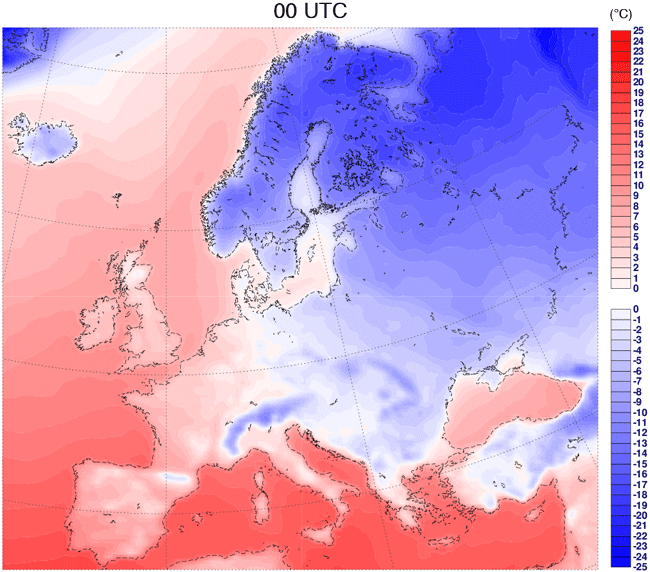

One year after the Paris Agreement on climate change, ECMWF launches its most powerful global climate monitoring tool to date, ERA5.
The publication of the first data from ERA5, representing a two-month period, marks a milestone for climate reanalysis at ECMWF.
The ERA5 climate reanalysis is produced by the EU-funded Copernicus Climate Change Service, which is operated by ECMWF. It provides a numerical description of the recent climate by combining models with observations.
Spanning the modern observing period from 1979 onward, ERA5 contains estimates of atmospheric parameters such as air temperature, pressure and wind at different altitudes, as well as surface parameters such as rainfall, soil moisture content and ocean wave height.
It improves on previous climate reanalyses in the ERA series through:
- Offering a much improved spatial resolution
- Providing hourly estimates of atmospheric variables
- Providing a consistent representation of uncertainties
- Using more satellite observations
- Giving access to all input observations
The Head of the Copernicus Climate Change Service at ECMWF, Jean-Noël Thépaut, said: “With better use of observations, an improved description of physical processes and a considerably higher spatial and temporal resolution, ERA5 creates new global datasets to monitor climate change, for research, education, and for commercial applications.
“For the first time, users will have access to hourly estimates of atmospheric variables at a horizontal resolution of 31 km, and on 137 levels from the surface up to 1 Pa (around 80 km).”

ERA5 will produce a 10-member ensemble of climate reconstructions for all parameters and levels. The chart shows the mean spread of the ensemble for surface air temperature in January 2016. The ensemble data will enable users to assess the confidence they can have in the analysis for various parameters and at different times and locations.
Global climate reanalysis provides critical resources for understanding and monitoring the processes associated with climate change, and for informing scenarios of future climate change.
Reanalysis combines information from past and present meteorological observations with modern forecast models, using data assimilation techniques originally developed for numerical weather prediction.

This animation shows the mean surface air temperature in Europe in January 2016 from ERA5 as it varies hour by hour.
All ERA5 data products are open access and free to download. They are hosted in ECMWF’s main archiving repository for meteorological data, MARS (Meteorological Archival and Retrieval System), and are available to the public through the ECMWF Web API.
For more information, please see the ERA5 press release: ![]() ERA5-press_release.pdf
ERA5-press_release.pdf
Top image: Daily mean surface air temperature for January 2016 from ERA5.
Please note that the preview data shown in this article may be superseded in the final release of ERA5 data.
